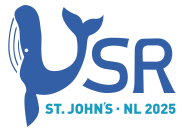Speaker
Description
The D-line of the J-PARC MLF MUSE has a pion decay section, which provides access to decay muons in addition to surface muons. The y-superconducting solenoid magnets used in the pion decay section have a large aperture and warm bore, allowing them to guide a wide range of positive and negative muons from high to very low momentum. In addition, the world's highest proton energy of 3 GeV makes negative pion generation particularly efficient. Hence, the world's highest negative muon intensity is achieved.
In recent years, the proton beam output of the MLF has reached 1 MW, and in the D1 area, where the μSR spectrometer is installed, and in the D2 area, where users can install their own equipment including negative muon particle analysers, negative muon spin rotation and relaxation methods, negative muon lifetime measurements, and even elemental negative muon X-ray analysis using negative muon X-rays.
Until now, the profile of the negative muon beam in D1 has been broadened. Various commissioning efforts have been carried out to produce a higher quality beam [1]. As a result, beams with low background and good parallelism have been successfully obtained. In this presentation, the status of beam commissioning in the D-line will be presented.
| soshi@post.kek.jp |

